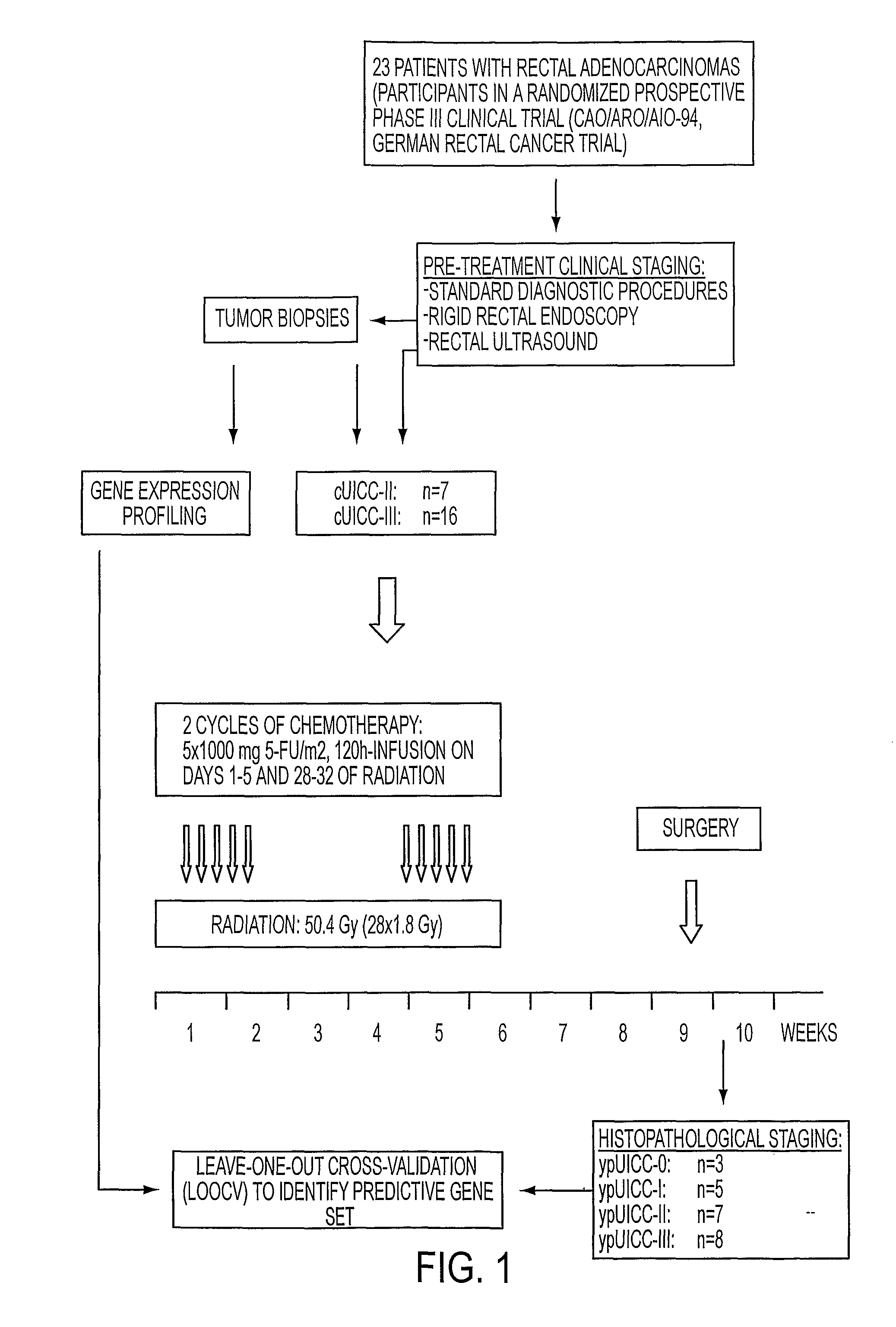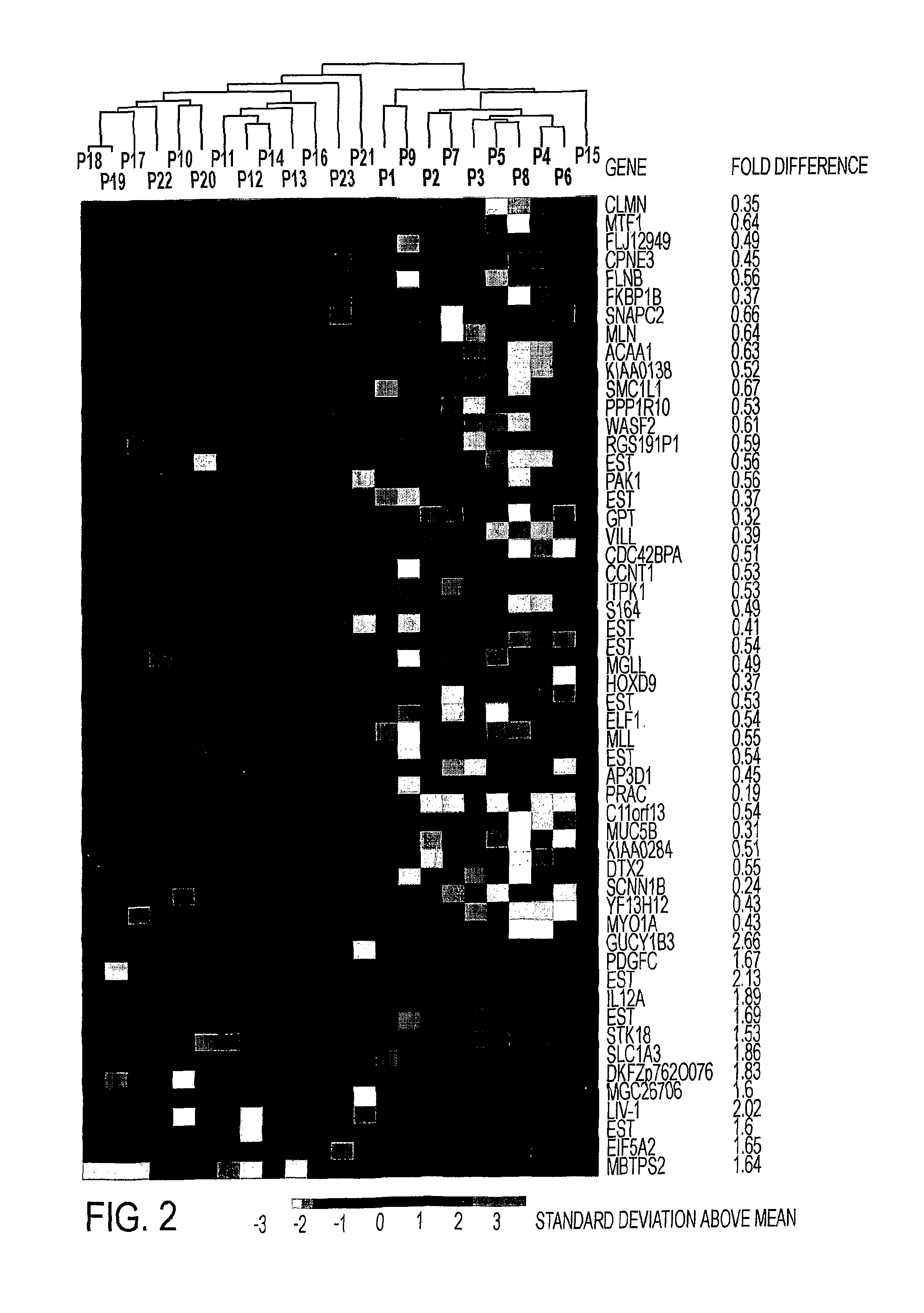Composition for detecting the response of rectal adenocarcinomas to radiochemotherapy
a rectal adenocarcinoma and radiochemotherapy technology, applied in the field of composition for detecting the response of rectal adenocarcinoma to radiochemotherapy, can solve the problems of large clinical dilemma, inability to materialize candidate gene approaches into sound pre-therapeutic predictors of response, and inability to detect the response of individual tumors
- Summary
- Abstract
- Description
- Claims
- Application Information
AI Technical Summary
Benefits of technology
Problems solved by technology
Method used
Image
Examples
example i
Patients and Methods
A. Selection of Patients and Response Classification
[0197]All patients are participants in a multicenter, randomized prospective phase III clinical trial (CAO / ARO / AIO-94, German Rectal Cancer Trial) aimed at determining the relative benefits of preoperative (neoadjuvant) versus postoperative (adjuvant) radiochemotherapy (Sauer et al. (2001) Strahlenther Onkol 177, 173-81). For the study here, we collected biopsies from 23 patients between December 2001 to October 2002 who were assigned to the neoadjuvant treatment arm adhering to the guidelines set by the local ethical review board. Pre-therapeutic staging was performed including complete medical history and physical evaluation, digital rectal examination, endorectal ultrasound, rigid rectoscopy with two tumor biopsies, colonoscopy, abdominal ultrasound, abdominal and pelvic computed tomography and chest X-ray. Endoscopic ultrasound was performed by two experienced surgeons and was based on the degree of tumor in...
example ii
Identification of Genes Whose Expression is Correlated with Responsiveness to Radiochemotherapy
[0203]In order to identify molecular signatures of responsiveness of rectal carcinomas to neoadjuvant, preoperative radiochemotherapy, we analyzed gene expression profiles of 23 tumor biopsies. The flow of sample collection, clinical diagnosis, and experimental design is depicted in FIG. 1. All patients participated in a randomized clinical trial aimed at comparing the relative benefits of adjuvant versus neoadjuvant radiochemotherapy of locally advanced rectal carcinoma. Since standardization of surgical procedure and evaluation of therapy response is critical, all patient samples were collected from a single clinic (University Medical Center Göttingen, Germany). Before biopsy sampling, initial tumor staging was performed by rectal ultrasound, a procedure that, in the experience of the inventors, shows concordance with the histomorphological classification of tumor resections in more than...
PUM
| Property | Measurement | Unit |
|---|---|---|
| wavelengths | aaaaa | aaaaa |
| wavelengths | aaaaa | aaaaa |
| wavelengths | aaaaa | aaaaa |
Abstract
Description
Claims
Application Information
 Login to View More
Login to View More - R&D
- Intellectual Property
- Life Sciences
- Materials
- Tech Scout
- Unparalleled Data Quality
- Higher Quality Content
- 60% Fewer Hallucinations
Browse by: Latest US Patents, China's latest patents, Technical Efficacy Thesaurus, Application Domain, Technology Topic, Popular Technical Reports.
© 2025 PatSnap. All rights reserved.Legal|Privacy policy|Modern Slavery Act Transparency Statement|Sitemap|About US| Contact US: help@patsnap.com


